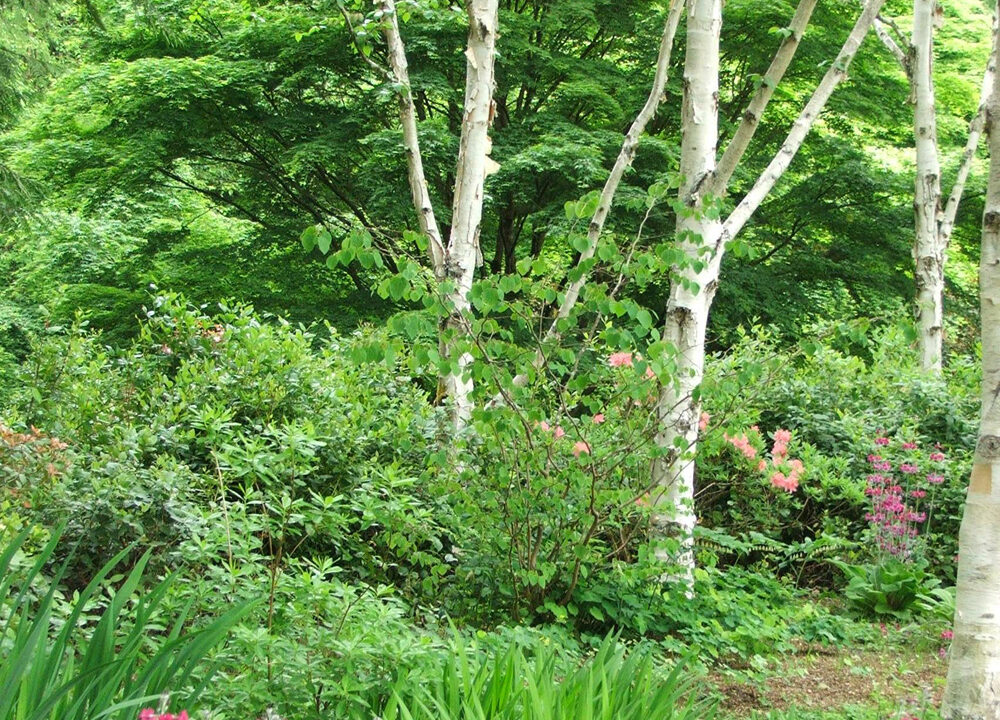
Hedgerow – Image Credit Mississippi Extension
“Hedgerows, also known as shelter belts or wind breaks, are living fences of trees, shrubs, groundcovers, vines, and other plants.” Mississippi Extension
A large, mature willow oak is growing on the outer extremity of where I plan to create my hedgerow.
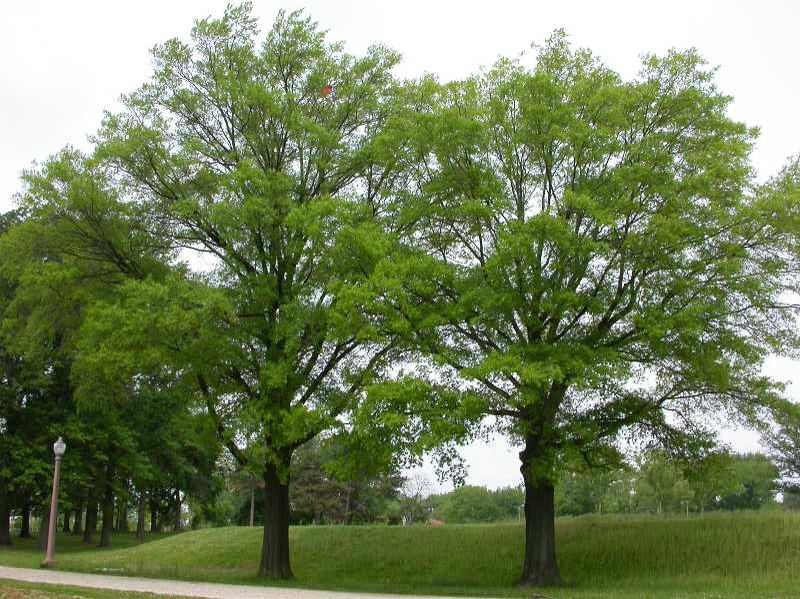

Willow Oak Leaves – Image Credit Jersey Yards
“Willow Oak is a medium to large-size and fast-growing deciduous tree in the Fagaceae family and the red oak group. It may grow 40 to 75 feet tall and 25 to 50 feet wide and has an oval to rounded crown.” North Carolina Extension
I want to taper the height of my hedgerow from that willow oak’s height.
On one side of the willow oak and a bit to the front of it, I’ll plant an Eastern Red Cedar.
Eastern Red Cedars grow to be about 30 feet tall, and they are bushy and evergreen. I am planting this tree to block my view of my neighbor’s house. They grow 12″ – 24″ per year.

Trees that I am planing in front of the willow oak
- Eastern Red Cedar
- River Birch
- Washington Hawthorn
- Dogwood
- Winterberry Berry Heavy
- Redbud
- Winterberry Berry Heavy
- Sargent Crabapples
- Crape Myrtle
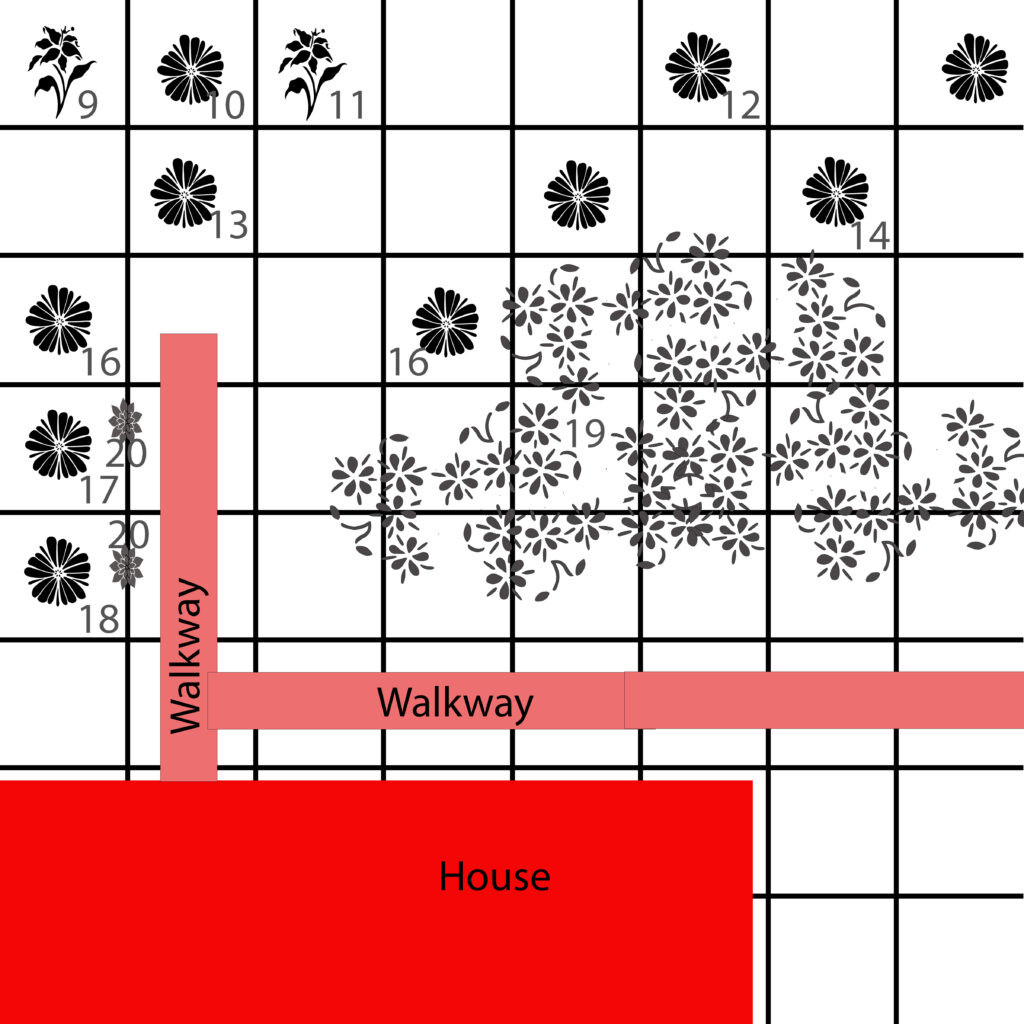
9. Sweet Autumn Clematis
10. Forsythia
11. Coral Honeysuckle
12. Oakleaf Hydrangea Alice
13. Yuletide Camellia Sasanqua
14. Azaleas
15. Hydrangea
16. Quickfire Hydrangea
17. October Magic Camellia Sasanqua
18. Radiance Rhododendron
19, Wildflowers
20. Loreapetulam – Dwarf Pixie Purple
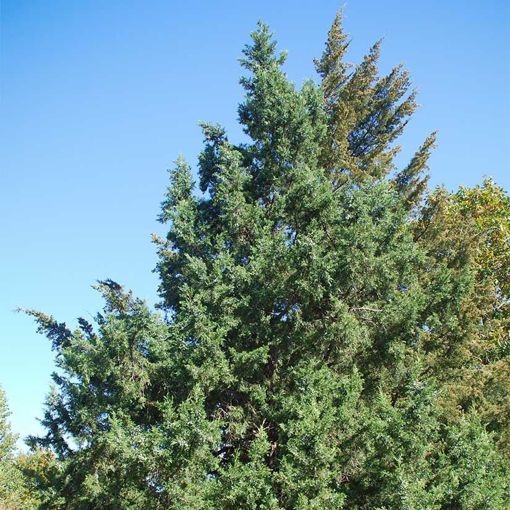
Eastern Red Cedar – Arbor Day

Eastern Red Cedar – Arbor Day
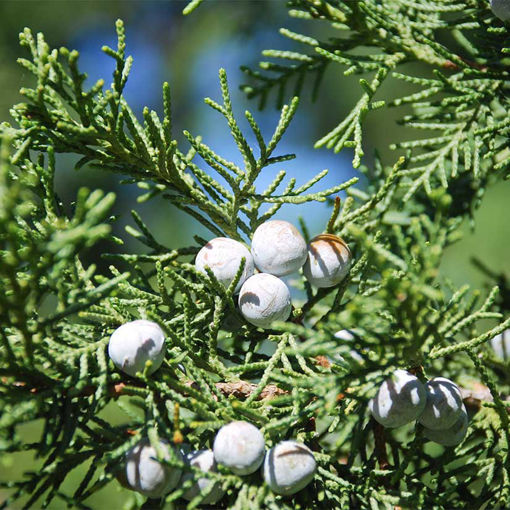
Eastern Red Cedar – Arbor Day
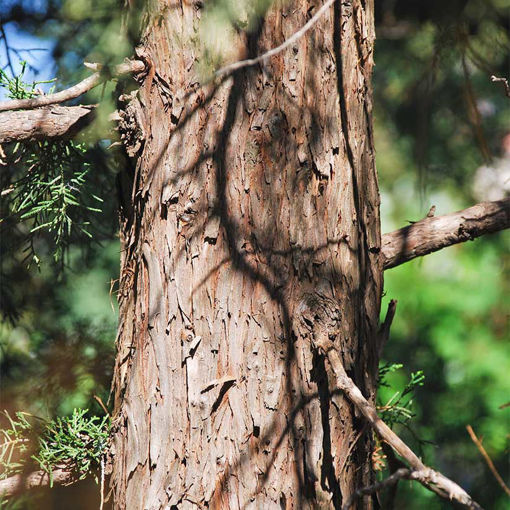
Eastern Red Cedar – Arbor Day
“[During the winter], many natives really strut their stuff. The Eastern red cedar (Juniperus virginiana) is Mother Nature’s Christmas tree choice for the South. While we notice disease and insects taking out many imported conifers, the Eastern red cedar keeps on trucking.” Norman Winter
Horticulturist
Central Mississippi Research & Extension Center

River Birch – Image Credit Arbor Day
“Driving through neighborhoods, I quickly notice how statuesque the river birch (Betula nigra) looks in landscapes with its gorgeous peeling bark.” Norman Winter
Horticulturist
Central Mississippi Research & Extension Center
On the other side of that willow oak, I’ll plant a river birch tree.
A river birch tree will quickly grow to be about 60 feet tall. It will grow 1.5′ to 3′ per year.
| Birch Tree Age | Growth Height (Approximate) |
|---|---|
| 3-5 Years | 8 Feet |
| 5-7 Years | 12 feet |
| 7-10 Years | 19 feet |
| 10-15 Years | 30 feet |
Chart Credit: 8billion trees.com

Washington Hawthorn – Image Credit Arbor Day
Height at Maturity 25 – 30 feet
I’ll plant 2 Washington Hawthornes toward the rear of the hedgerow.
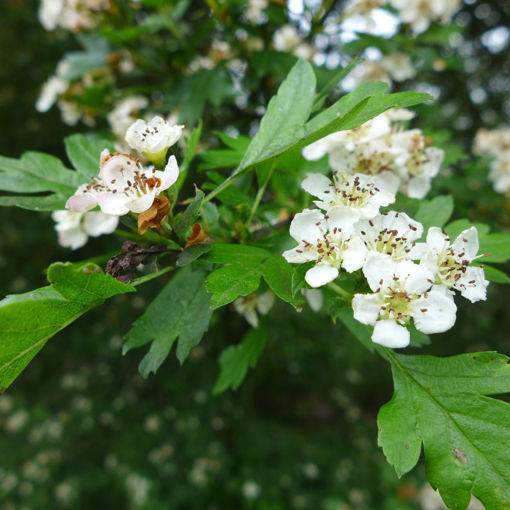
Washington Hawthorne Blooms – Image Credit Arbor Day
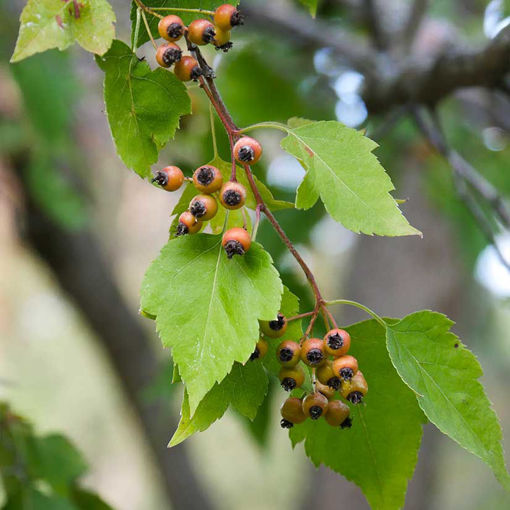
Washington Hawthorn – Image Credit Arbor Day
- 2 Washington Hawthorns (Crataegus phaenopyrum)

White Dogwood – Image Credit Arbor Day
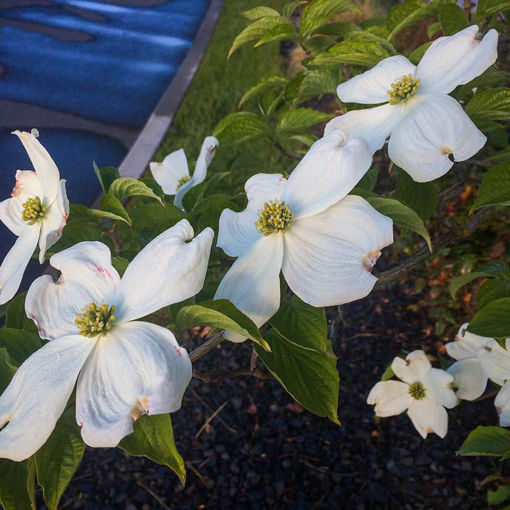
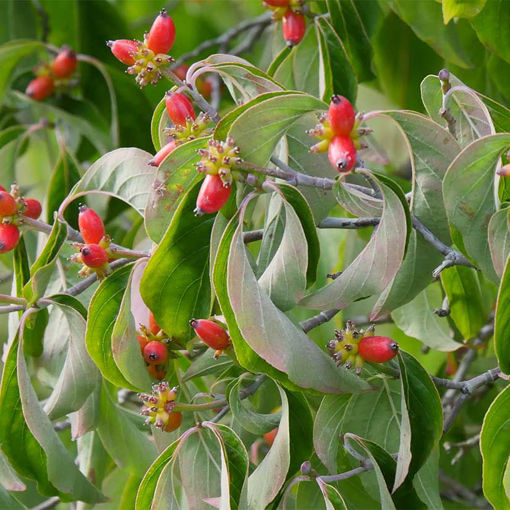
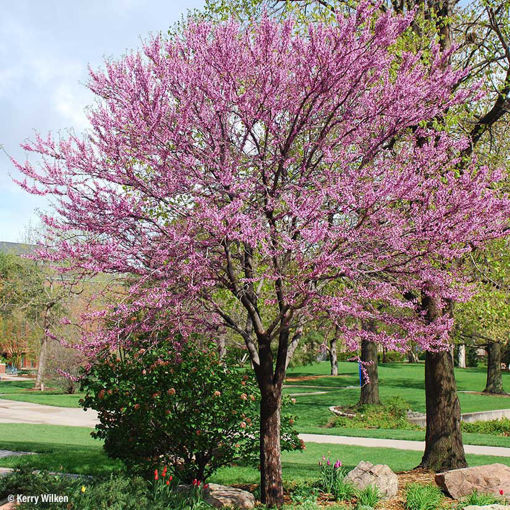
I planted a 6′ tree in August of 2023
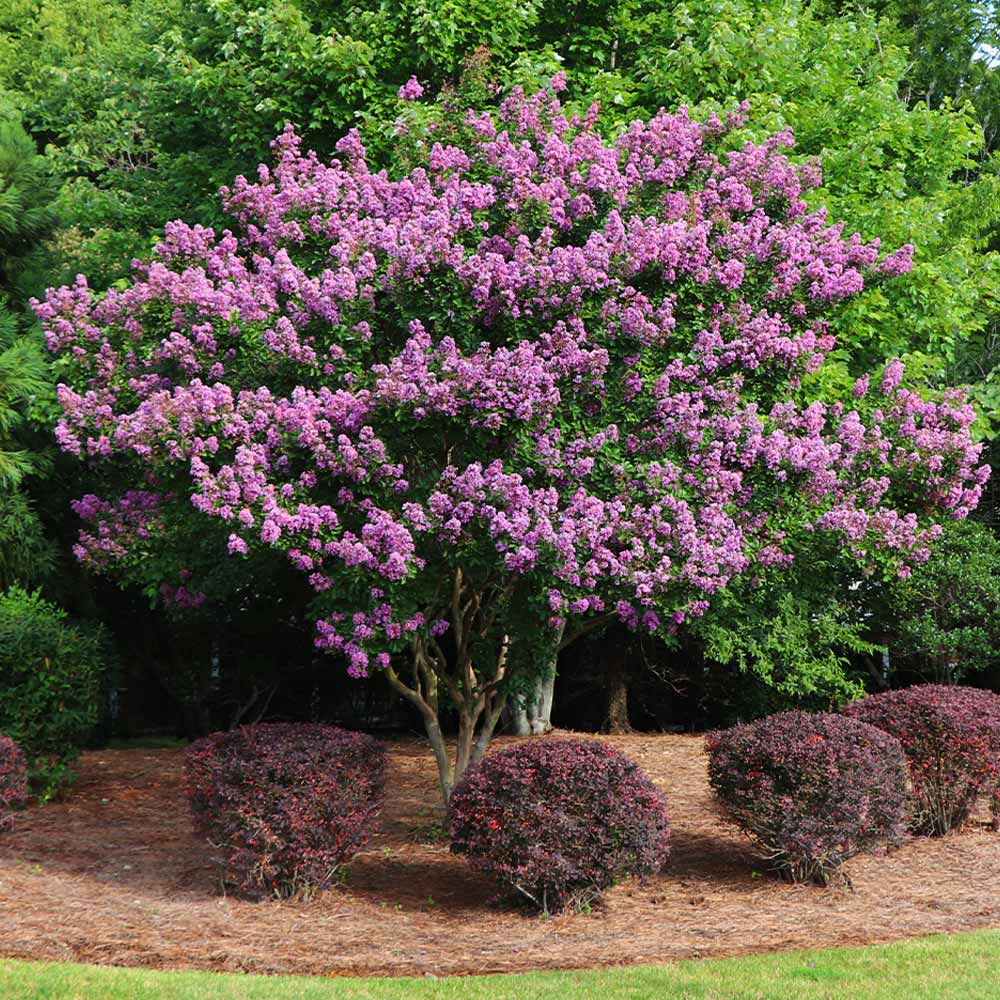
Height: 16′


Winterberry – Image Credit: Tennessee Nursery

Because I love the red berries on winterberry hollies, I hope to grow a hedge of them about midway between my yard and the willow oak tree.
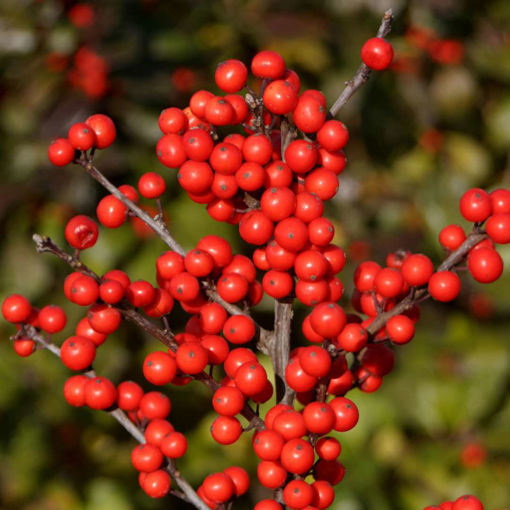
Berry Heavy Winterberry – Image Credit: Arbor Day
“The Berry Heavy winterberry provides an explosion of beautiful color, with red berries loading its branches in the fall and winter months. This shrub works well for mass plantings, hedges, cutting gardens, wildlife gardens, and natural areas. As this is a female selection, a male pollinator, such as Mr. Poppins® Winterberry, is required for berry production.” Arbor Day
- Produces bright red berries to provide color and interest in fall and winter
- Blooms white in the spring
- Attracts pollinators and birds but is deer-resistant
- Requires a male pollinator to produce berries
“The bright red berries of our native hollies give some of our best winter color. The American holly (Ilex opaca), yaupon (Ilex vomitoria), possum haw (Ilex decidua), and the swamp or winterberry holly (Ilex verticillata) deserve a place in the yard.” Norman Winter
Horticulturist
Central Mississippi Research & Extension Center
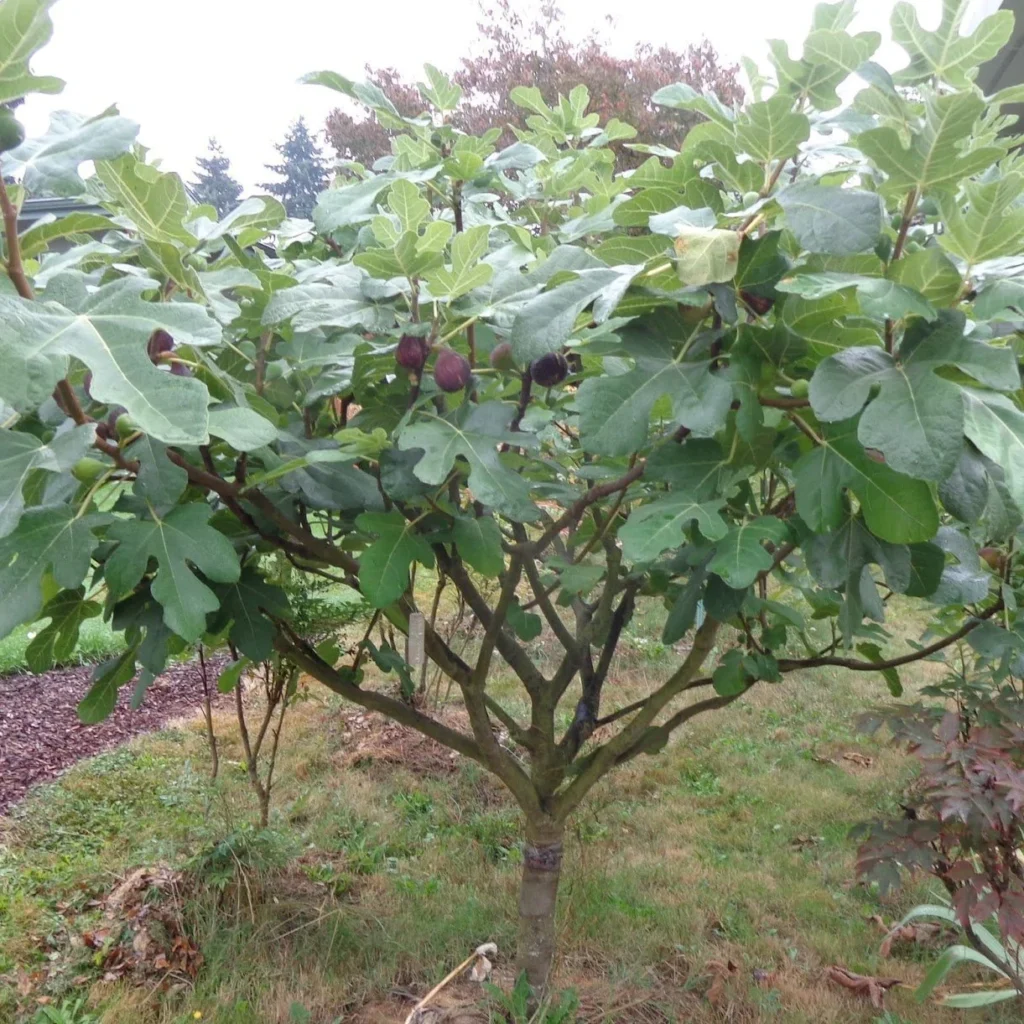
Chicago Fig Tree – Image Credit plantingtree.com
Height 10′ – 15′
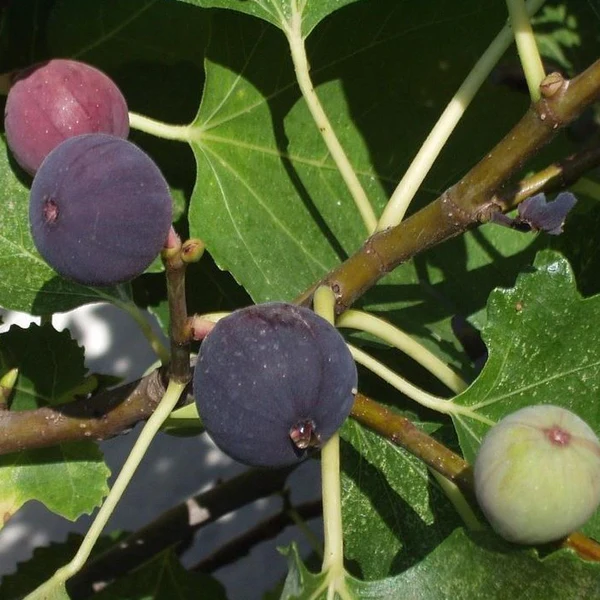
Chicago Fig Tree Fruit – Image Credit plantingtree.com
Oakleaf Hydrangea Alice –
Height: 6′-8′ tall
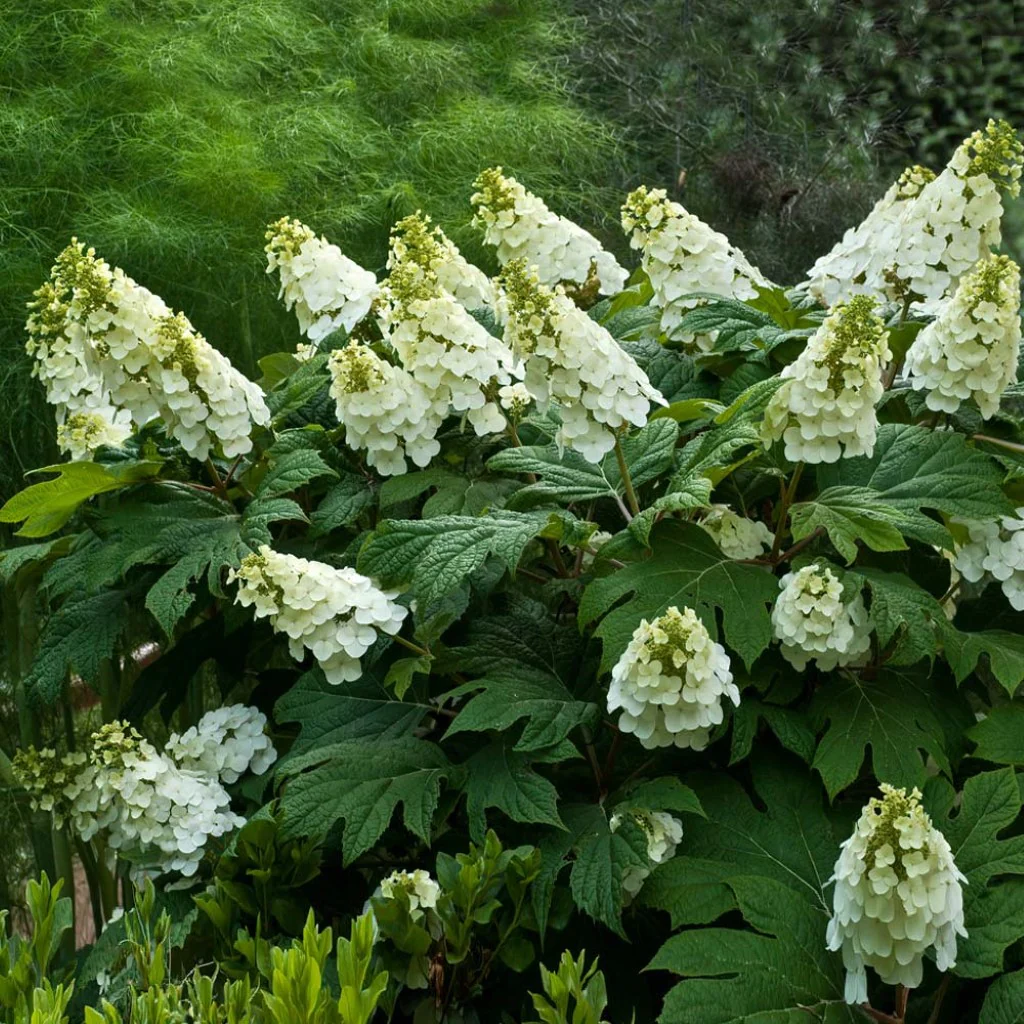
Oakleaf Hydrangea Quercifolia – Image Credit Pixies Gardens
Height 6′ – 10′
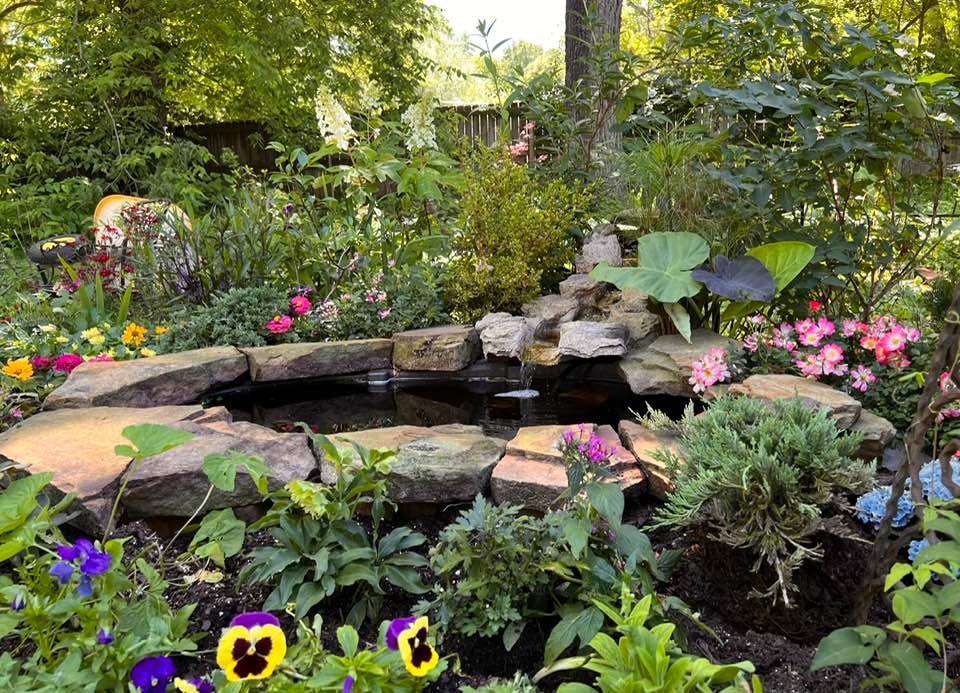
Oakleaf Hydrangea Alice – Behind Pond in Jacki Kellum’s Garden 2022
In my garden, I use Oakleaf Hydrangeas as the immediate backdrop of my perennials and other closer garden elements.
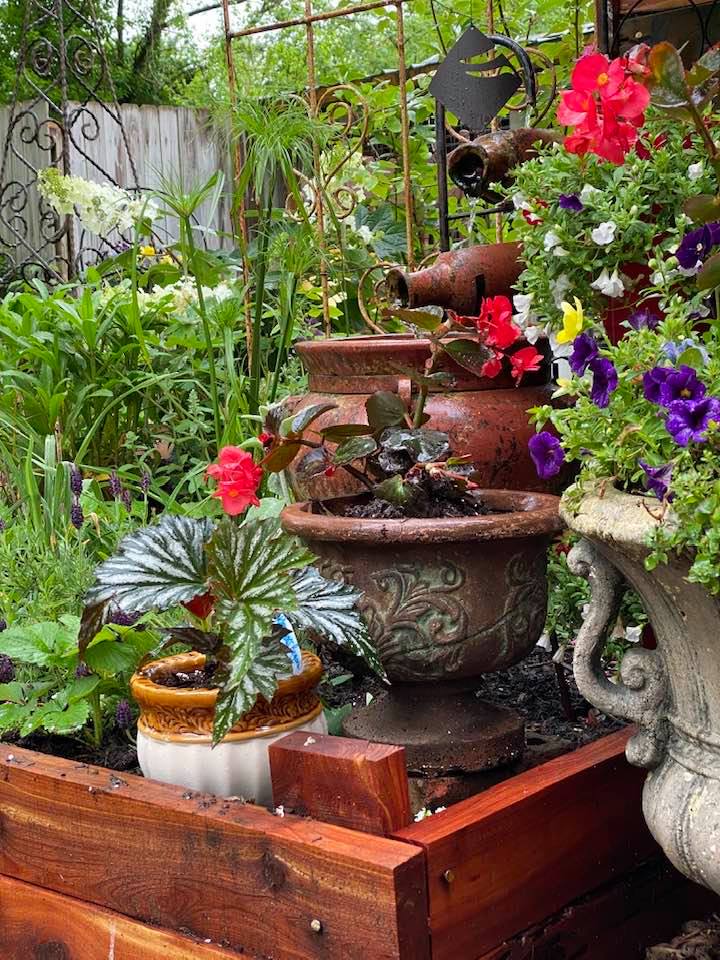
Oakleaf Hydrangea Alice- Behind Patio in Jacki Kellum’s Garden 2022
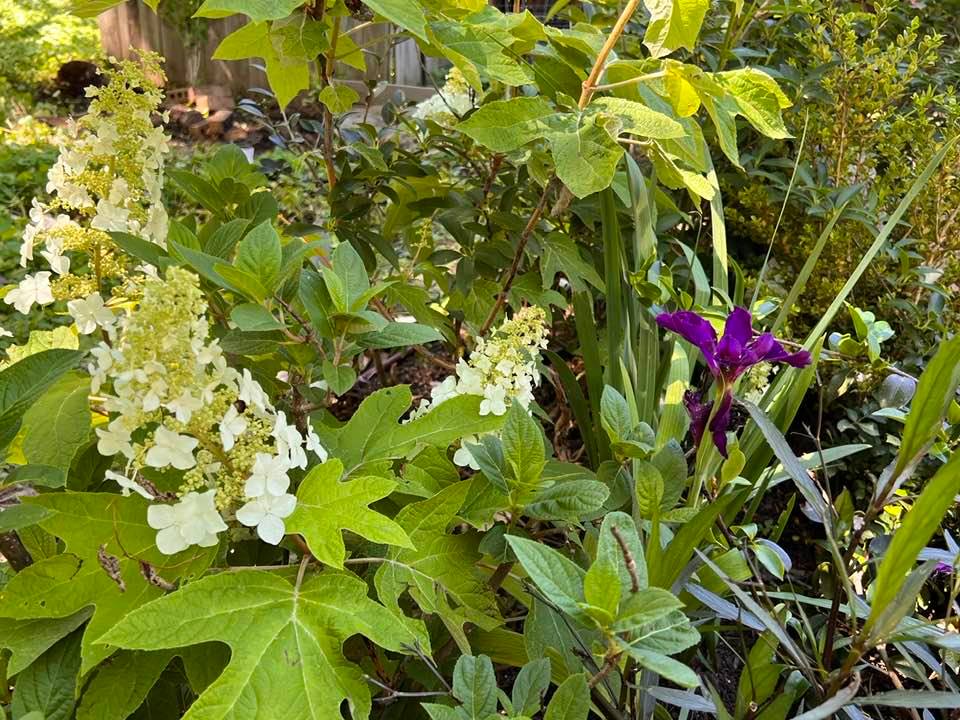
Oakleaf Hydrangea Alice – with Jeri Louisiana Iris in Jacki Kellum Garden 2022

Black Diamond Shell Pink Crape Myrtle – Image Credit plantmegreen.com
Height 12′

Black Diamond Shell Pink Crape Myrtle – Image Credit plantmegreen.com

Black Diamond Mystic Magenta Crape Myrtle – Image Credit Home Depot
Height 12′

Black Diamond Mystic Magenta Crape Myrtle – Image Credit Home Depot

Yuletide Camellia – Image Credit Fast Growing Trees
Height 8′ – 10′

Yuletide Camellia – Image Credit Fast Growing Trees

Forsythia – Image Credit Fast Growing Trees
Height 3′ – 8′
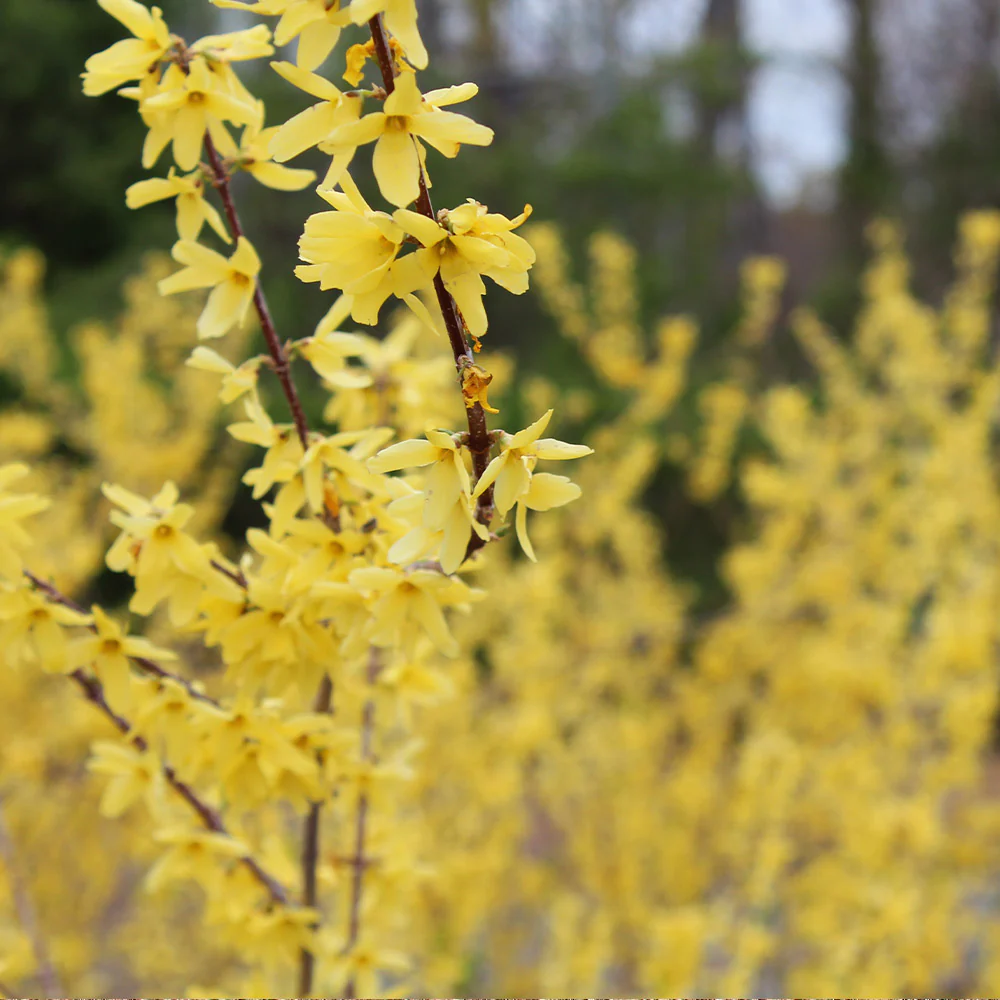
Forsythia – Image Credit Fast Growing Trees
Height 8′ – 10′
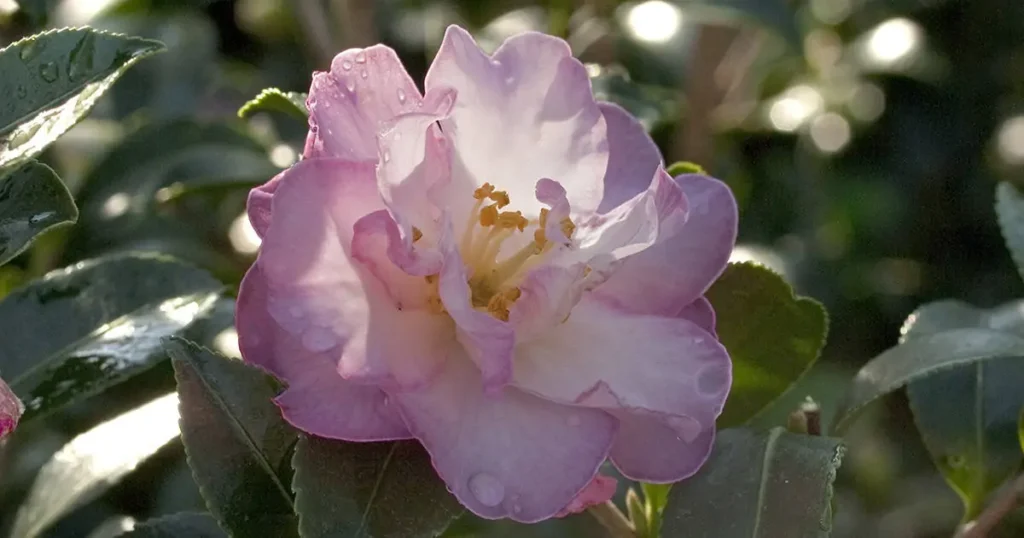
October Magic Camellia – Image Credit Southern Living
Height 6′ – 8′

Radiance Rhododendron – Image Credit Jackson Perkins

Sargent Crabapple – Image Credit Flickr
Height at Maturity 6 – 10 feet
- 2 Sargent Crabapples (Malus sargentii)
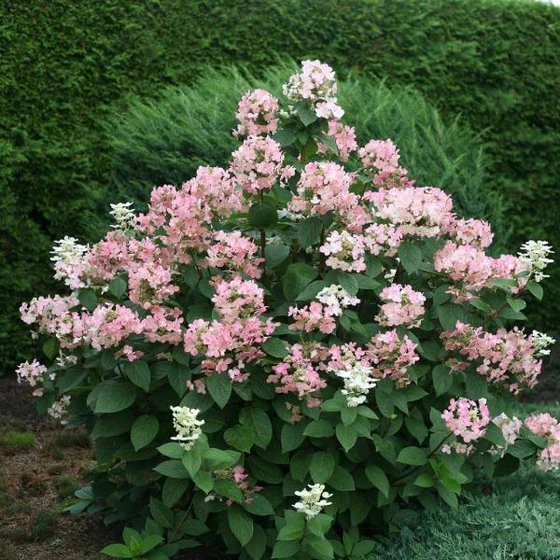
Quickfire Hydrangea – Image Credit: Proven Winners
Height: 6′
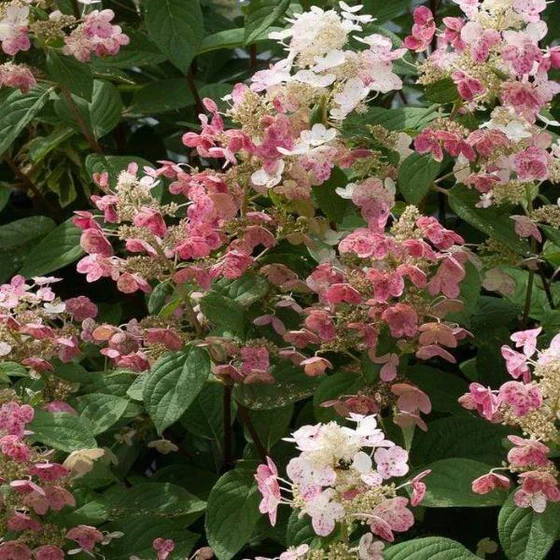
Quickfire Hydrangea – Image Credit: Proven Winners
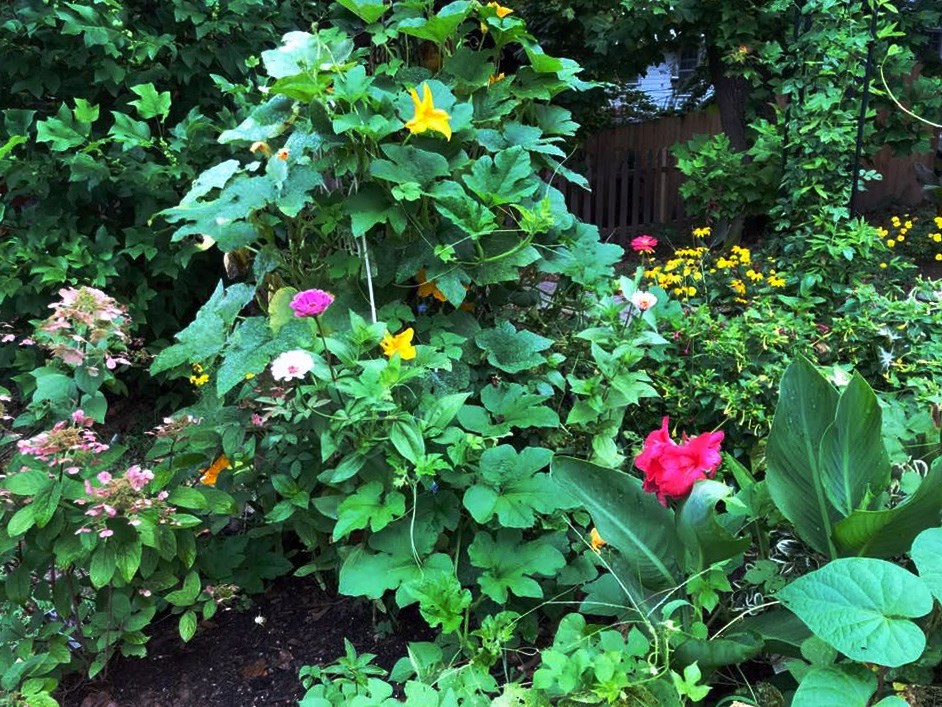
Quickfire Hydrangea – Jacki Kellum Garden in 2021

American Beautyberry – Image Credit Simply Trees
“Growth rate:
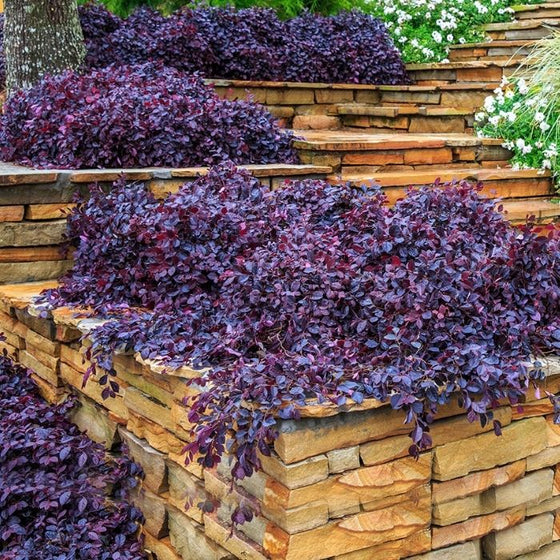
Purple Pixie Loropetalum – Image Credit Woodie’s Garden Goods
Height – 1′ – 2′ | Spread 4′ – 5′
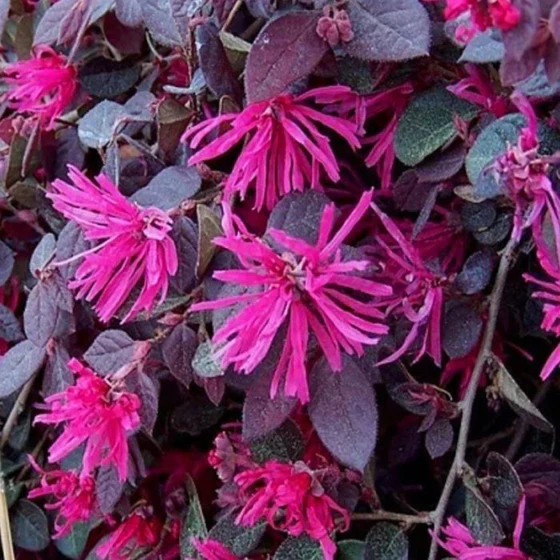
Purple Pixie Loropetalum – Image Credit Woodie’s Garden Goods

Purple Pixie Loropetalum – Image Credit Woodie’s Garden Goods
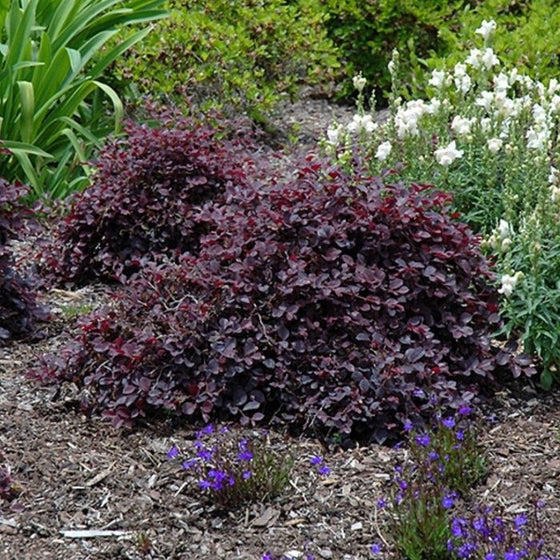
Purple Pixie Loropetalum – Image Credit Woodie’s Garden Goods

Published in 1910
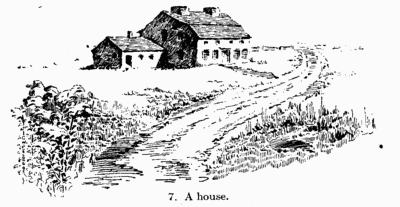
House without a hedgerow to anchor it. – Bailey
“A house must have a background if it is to become a home. A house that stands on a bare plain or hill is a part of the universe, not a part of a home. Recall the cozy little farm-house that is backed by a wood or an orchard; then compare some pretentious structure that stands apart from all planting. Yet how many are the farm-houses that stand as stark and cold against the sky as if they were competing with the moon! We would not believe it possible for a man to live in a house twenty-five years and not, by accident, allow some tree to grow, were it not that it is so!” Bailey
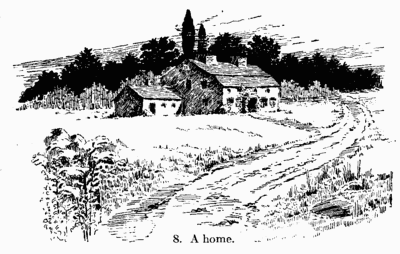 ail
ail
House Nestled in front of a natural hedgerow – Bailey
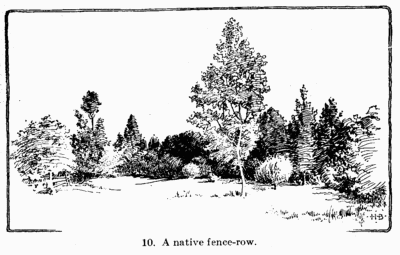
A natural fence – Bailey
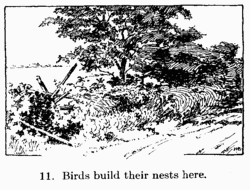
Hedgerows are natural habitats for birds and other wildlife – Bailey
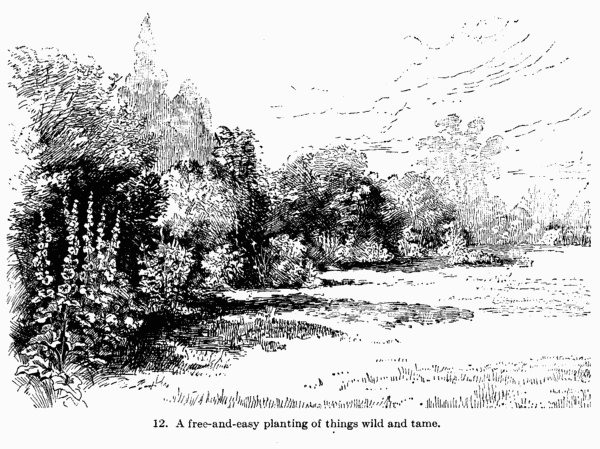
Bailey
“Reduced to a single expression, all this means that the greatest artistic value in planting lies in the effect of the mass, and not in the individual plant. A mass has the greater value because it presents a much greater range and variety of forms, colors, shades, and textures, because it has sufficient extent or dimensions to add structural character to a place, and because its features are so continuous and so well blended that the mind is not distracted by incidental and irrelevant ideas . …
“One is attracted by the freedom of arrangement, the irregularity of sky-line, the bold bays and promontories, and the infinite play of light and shade. …
“It is not enough that trees and bushes be planted in masses. They must be kept in masses by letting them grow freely in a natural way. The pruning-knife is the most inveterate enemy of shrubbery … Bailey
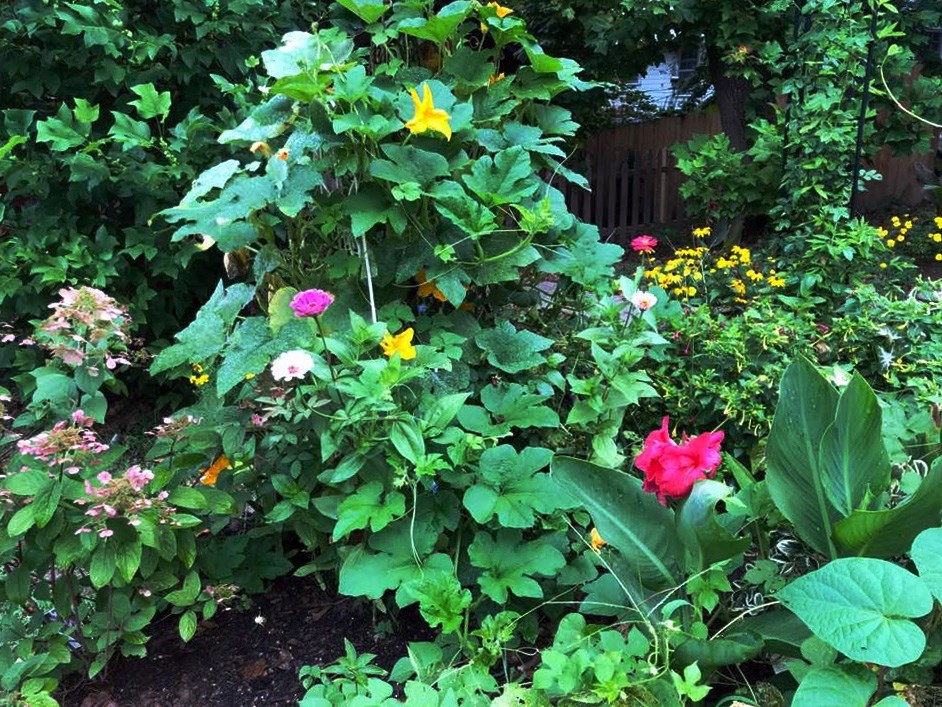
Flowers against a Natural Hedgerow in Jacki Kellum’s Garden – 2021

Think of a hedgerow as the mat around a fine painting. The mat is the space that allows the art to shine.
“I do not mean to discourage the use of brilliant flowers and bright foliage and striking forms of vegetation; but these things are never primary aile in a good domain. The structural elements of the place are designed first. The flanking and bordering masses are then planted. Finally the flowers and accessories are put in, as a house is painted after it is built. Flowers appear to best advantage when seen against a background of foliage, and they are then, also, an integral part of the picture. The flower-garden, as such, should be at the rear or side of a place, as all other personal appurtenances are; but flowers and bright leaves may be freely scattered along the borders and near the foliage masses. …” Bailey
Defects in flower-growing.
“The greatest defect with our flower-growing is the stinginess of it. We grow our flowers as if they were the choicest rarities, to be coddled in a hotbed or under a bell-jar, and then to be exhibited as single specimens in some little pinched and ridiculous hole cut in the turf, or perched upon an ant-hill that some gardener has laboriously heaped oh a lawn. Nature, on the other hand, grows many of her flowers in the most luxurious abandon, and one can pick an armful without offense. She grows her flowers in earnest, as a man grows a crop of corn. One can revel in the color and the fragrance and be satisfied.” Bailey
I’ll also incorporate my free tree seedlings that will arrive during the spring of 2024

- 3 Eastern Redbuds (Cercis canadensis)

Sargent Crabapple – Image Credit Flickr
Height at Maturity 6 – 10 feet
- 2 Sargent Crabapples (Malus sargentii)

Washington Hawthorn – Image Credit Arbor Day

Washington Hawthorn – Image Credit Arbor Day
- 2 Washington Hawthorns (Crataegus phaenopyrum)

White Dogwood – Image Credit Arbor Day

White Dogwood – Image Credit Arbor Day
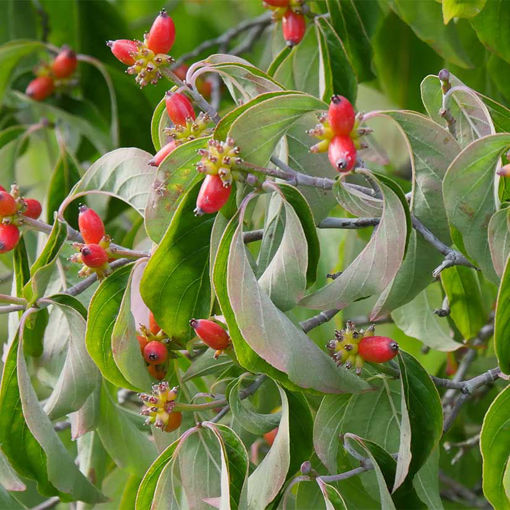
White Dogwood – Image Credit Arbor Day
- 3 White Flowering Dogwoods (Cornus florida)
“Hedgerows have been used for centuries in English and American landscapes to primarily divide agricultural fields or residential properties. In addition to marking property lines, incorporating or maintaining hedgerows offer the following important benefits:
“1. Screening of adjacent properties. While fences are often used to create privacy areas on residential properties, using tall plants to provide a visual separation costs less than constructing and maintaining fences. Although it takes a few more years to establish a dense vegetated screen than a constructed privacy fence, there are often no municipal height restrictions for vegetation as there are with fences. Also, a well designed and planted vegetation barrier can be an attractive alternative to many lower cost fence materials.
“2. Buffering winds, noise, and dust. Establishing dense tree lines on the north sides of properties (often in more northern landscapes) buffers homes from cold winter winds, reducing winter heating costs. Dense vegetated screens are also effective barriers to dust from neighboring properties and nearby unimproved roadways. While hedgerows are not as effective as sound walls to reduce nearby noise, even narrow planting strips will reduce some sounds. The wider the hedgerow the more noise will be deflected. Choose evergreen plants to ensure some noise reduction in winter.
“3. Enhancing wildlife. Dense shrub and tree areas are important food, nesting, and travel routes for many species of birds and other wildlife. If you have mostly lawn on your property, one of the most effective ways of attracting more animal species is to provide tree and shrub zones. Many species of plants that are found in hedgerows, including beautyberry (Callicarpa americana), wax myrtle (Myrica cerifera), and hollies (Ilex spp.) are also important food plants. The more species of wildlife plants that are included will allow the maximum diversity of animals utilizing the area. To provide for the widest variety of wildlife, hedgerows should have diverse layers of vegetation, including canopy trees, understory trees, tall and low shrubs, and groundcover layers. Animals that do not travel through open lawn areas will use hedgerows to move from important watering, nesting and feeding sites. Many bird species will use dense vegetation for their nesting areas. For wildlife use, hedgerow widths worked best at a minimum distance of twenty feet.
“4. Reducing soil erosion and improving water quality. Dense vegetated barriers slow water runoff during rainstorms, allowing soil particles to become trapped amongst grasses and dense stems. Slower moving water has a better chance of infiltrating into the soil instead of moving across the ground. Controlling soil erosion and allowing for better water infiltration is very important along drainage ways, stream edges, and other water bodies to reduce water pollution. While narrow riparian buffers can help some, hedgerows of thirty feet or more have shown the greatest filtration benefits.
Establishing Hedgerows
“Depending upon its function, hedgerows can be fairly easy to establish. If a property line is currently being mown and maintained, about the easiest and least expensive way of establishment is to simply stop mowing the desired hedgerow width and allow it to grow up into woodland. Grasses, wildflowers, shrubs, and tree seedlings will be the first to establish from existing or nearby plant sources. As birds and other wildlife use the area, they will also bring in seeds from other places. Depending upon the soil and moisture conditions, an effective privacy screen can develop within the first five to seven years. Invasive exotic plant species, such as privet (Ligustrum sinense), tallow tree (Sapium sebiferum), Japanese honeysuckle (Lonicera japonica) and others often invade these areas. These can be managed for by the occasional spot use of herbicides or mechanical removal.
For a more managed planting, trees and shrubs can be established from container plants. For faster screening, plant shrub species a little closer together than their mature width. Select several species of large trees, smaller trees and shrub types; especially ones with wildlife benefits. A wide variety of wildlife plant types may be found on the Attracting Bird, Butterfly, and Hummingbird pages. To minimize watering and maintenance requirements, plant in the fall or winter and use tough plant species that require little care. A recommended list of plants may be found in The Low Maintenance Landscape article. Mulching the area around the plants will help maintain soil moisture, and supplemental watering may be necessary until plants are established. The linear nature of a hedgerow works well with the use of soaker hoses for irrigation.
“Recommended plant species for hedgerows in average residential sunny conditions are listed below.
| Large Trees | ||
| COMMON NAME | BOTANICAL NAME | CHARACTERISTICS |
| Sugar hackberry | Celtis laevigata | Fast growing, low maintenance |
| Green ash | Fraxinus pennsylvanica | Fast growing, wildlife food |
| Sweet gum | Liquidamber styraciflua | Fast growing, wildlife food, tough |
| Sycamore | Platanus occidentalis | Fast growing, wildlife food |
| Cottonwood | Populus deltoids | Fast growing, butterfly host |
| Southern red oak | Quercus falcata | Wildlife food |
| Swamp chestnut oak | Quercus michauxii | Wildlife food |
| Water oak | Quercus nigra | Fast growing, wildlife food |
| Nuttall oak | Quercus nutallii | Wildlife food |
| Southern magnolia | Magnolia grandiflora | Evergreen, wildlife food |
| Slash pine | Pinus elliottii | Fast growing, evergreen |
| Loblolly pine | Pinus taeda | Fast growing, evergreen |
| Red maple | Acer rubrum | Fast growing, wildlife food |
| American holly | Ilex opaca | Wildlife food, evergreen |
| Small Tree | ||
| COMMON NAME | BOTANICAL NAME | CHARACTERISTICS |
| Ironwood | Carpinus caroliniana | Tough |
| Redbud | Cercis canadensis | Spring flowers |
| Parsley hawthorne | Crataegus marshallii | Wildlife food |
| Green hawthorne | Crataegus viridis | Wildlife food |
| Persimmon | Diospyros virginiana | Wildlife food |
| Silverbell | Halesia diptera | Spring flowers |
| Witch hazel | Hamamelis virginiana | Fall color |
| Deciduous holly | Ilex decidua | Wildlife food |
| Crab apple | Malus angustifolia | Wildlife food |
| American plum | Prunus americana | Wildlife food |
| Shining sumac | Rhus copallina | Wildlife food |
| River birch | Betula nigra | Fast growing |
| Black cherry | Prunus serotina | Wildlife food |
| Winged elm | Ulmus alata | Low maintenance |
| Yaupon holly | Ilex vomitoria | Evergreen, wildlife food |
| Eastern red cedar | Juniperus virginiana | Evergreen |
| Wax myrtle | Myrica cerifera | Evergreen, wildlife food |
| Large shrub | ||
| COMMON NAME | BOTANICAL NAME | CHARACTERISTICS |
| Arrowwood viburnum | Viburnum dentatum | Wildlife food |
| Beautyberry | Callicarpa americana | Wildlife food |
| Sweetspire | Itea virginica | Spring flowers |
| Summersweet | Clethra alnifolia | Spring flowers |
| Cassine holly | Ilex cassine | Wildlife food |
| Sweet olive | Osmanthus americanus | Evergreen |
| Elderberry | Sambucus canadensis | Wildlife food |
| Bamboo | Phyllostachys spp. | Dense screen |
| Groundsel bush | Baccharis halimifolia | Fall flowers |
| Gallberry holly | Ilex glabra | Wildlife food, evergreen |
| Winterberry holly | Ilex verticillata | Wildlife food |
| Tree huckleberry | Vaccinium arboreum | Wildlife food |
| Elliott’s blueberry | Vaccinium elliottii | Wildlife food |
| Vine | ||
| COMMON NAME | BOTANICAL NAME | CHARACTERISTICS |
| Cross vine | Bignonia capreolata | Spring flowers, hummingbirds |
| Trumpet vine | Campsis radicans | Spring flowers, hummingbirds |
| Clematis | Clematis virginiana | Fall flowers |
| Yellow Jessamine | Gelsemium sempervirens | Evergreen |
| Morning glory | Ipomoea spp. | Summer flowers |
| Coral honeysuckle | Lonicera sempervirens | Hummingbirds |
| Maypop | Passiflora incarnate | Butterflies |
| Greenbriar | Smilax lanceolata | Evergreen, wildlife food |
| Grape | Vitis rotundifolia | Wildlife food |
Robert F. Brzuszek, Assistant Extension Professor, The Department of Landscape Architecture, Mississippi State University.
Willow Oak – Image Credit Jersey Yards
A large willow oak tree grow on the outskirts of the area where I hope to grow my hedgerow. I’ll simply stop mowing that area, and the acorns that drop will produce more trees. Willow Oak trees are native in Mississippi.
“What is the growth rate of a Willow Oak?
-
- The Willow Oak is known for its rapid growth. Under optimal conditions, it can add 2 feet or more to its height each year….
- How long does it take for a Willow Oak to mature?
- Willow Oaks typically reach maturity in about 20 to 30 years, though this can vary based on environmental conditions and care.
- Do Willow Oaks produce acorns?
- Yes, like other oaks, Willow Oaks produce acorns. Their acorns are small and enjoyed by a variety of wildlife.” forestry.com
“Willow oak is a host for several butterflies, skippers and moth larva — specifically the white M hairstreak, banded hairstreak, gray hairstreak and Juvenal’s duskywing. Also, this oak is a host to the northern walkingstick insect. Bugs that use this tree are leafhoppers, treehoppers, lace bugs, plant bugs, leaf beetles, weevils’ aphids, larvae of long-horned beetles and gall wasps. The willow oak is a favorite host to leafhoppers: eratoneura ellisi, eratoneura immota, eratoneura lenta, and eratoneura phellos.
“In this area, the acorns are enjoyed by squirrels, chipmunks, deer, foxes, raccoons, woodpeckers, bluejays, crows, grouse, quail, pheasants, turkeys, songbirds and nuthatches. Wood ducks and mallards will also eat the acorns of willow oaks.
Fun facts:
“• The first scientific observation regarding this tree was made in 1723. Willow oaks were found to be used for newel posts, pulpits, pews, bar tops, wagon axles, stairs, railing, balustrades, bedframes and flour barrels by early pioneers. The acorns were used as substitute for flour and, when roasted with chicory, a coffee substitute.
“• It was Thomas Jefferson’s favorite tree.” coastalpoint.com
American Beautyberry – Image Credit Simply Trees
“Growth rate: